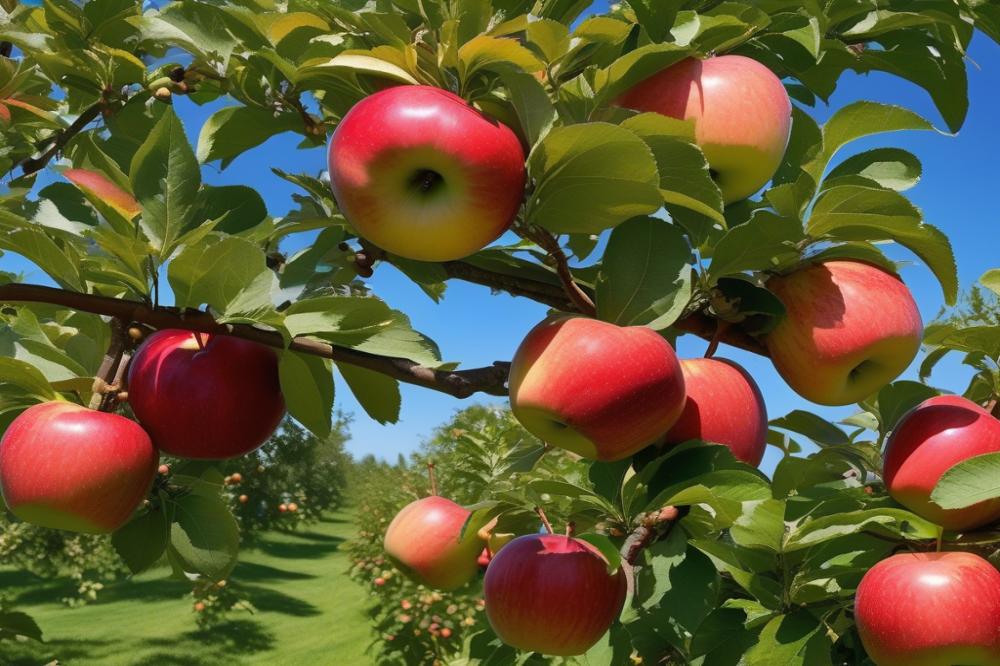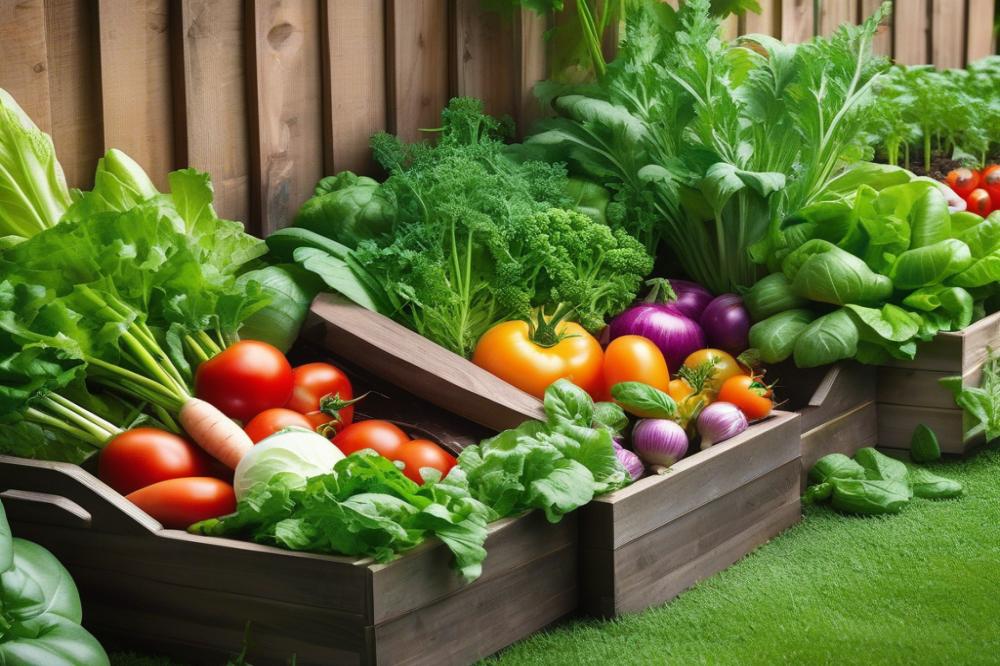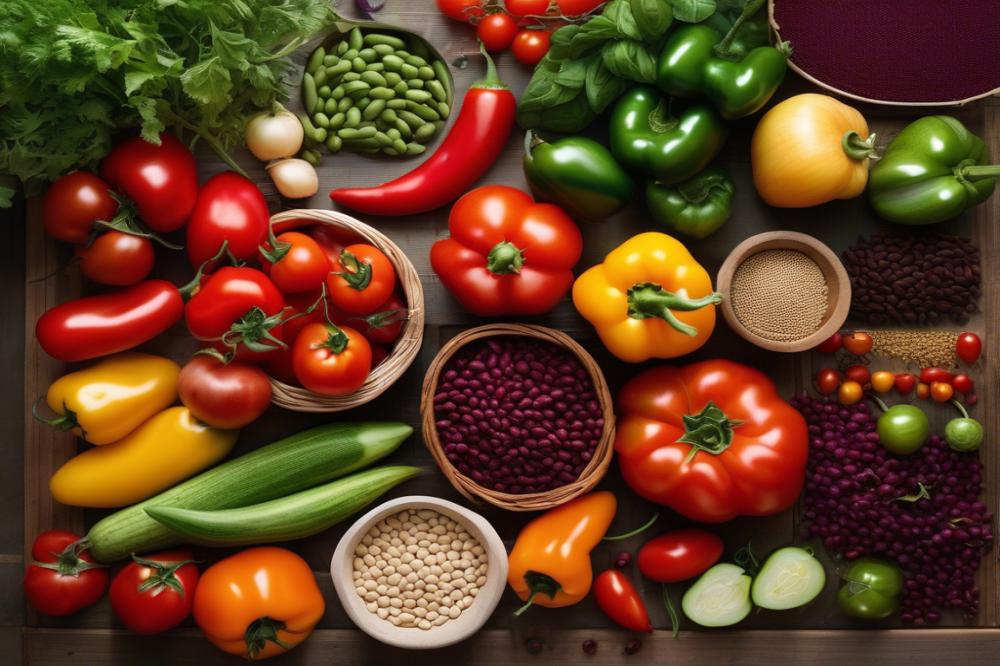Sweet and Juicy: Growing Ambrosia Apples
The world of apples is both diverse and delightful, and among the many varieties, one that stands out is the Ambrosia. These sweet apples are adored not just for their taste but also for their crisp texture and juicy flesh. Gardeners and fruit lovers alike seek this variety for its rich flavor, which offers a perfect balance between sweetness and a hint of floral notes. Their popularity has soared in recent years, making them a must-have for those looking to explore apple cultivation in their own backyards.
Growing apples can be a rewarding experience. It allows individuals to enjoy fresh, organic apples right from their garden. Planting an apple tree can bring joy and satisfaction, especially when it comes time for harvesting apples. Beyond the enjoyment of tasting freshly picked fruit, there are numerous benefits to engaging in fruit gardening. Apple varieties like Ambrosia thrive in a conducive environment, leading to delicious results that are hard to beat.
Incorporating this exceptional variety into your garden can elevate your fruit-growing experience. Sweet, juicy apples like Ambrosia are not just a treat; they also provide nutritional advantages. More than just a snack, apples are packed with vitamins and antioxidants. With the right planting tips and tree care practices, even novice gardeners can see wonderful results. So, if you’re contemplating what to plant next, consider the Ambrosia Apples for your edible landscape.
Understanding Ambrosia Apples

Ambrosia apples stand out in the realm of fruit for their delightful sweetness and extraordinary juiciness. They are known for a crisp, tender texture that makes each bite a delightful experience. Generally, these apples have a lovely red and yellow hue, signaling their ripeness. Enthusiasts often describe them as sweet apples, attributing their rich flavor to the natural sugars present in the fruit.
When comparing Ambrosia apples to other apple varieties, their flavor profile is remarkably distinct. While Granny Smith apples may offer a tart bite, and Honeycrisps provide a balance of sweet and tangy, Ambrosia showcases a pure sweetness that appeals to many. They are perfect for fresh eating and pair well with cheese or in salads. Additionally, these juicy apples shine in desserts, but their flavor is often best appreciated straight from the tree.
Origins in the Apple-Growing Community
The history of this delightful apple goes back to the 1990s in Canada. A chance seedling emerged from the orchard of an apple grower, leading to the discovery of this exceptional fruit. Since then, they have gained popularity among gardeners and orchardists. Farmers appreciate the ease of growing these apples, particularly when following proper planting tips.
Organic apples have become increasingly popular, and Ambrosia varieties are no exception. As demand for sustainably grown produce rises, home gardeners are planting these apple trees in their backyards. As a result, the demand and cultivation of Ambrosia apples continue to thrive.
During the harvest season, these sweet apples are a common sight at local farmers’ markets. The ease of harvesting apples like these contributes to their appeal. Their vibrant color and flavorful taste attract many who seek the best fruit gardening options.
In conclusion, Ambrosia apples offer a unique tasting experience for those who savor sweet and juicy fruit. Their rich history and cultivation in the apple-growing community underline their value among diverse apple varieties. Growing apples like these brings joy to many gardeners who appreciate their flavor and growing potential.
Choosing the Right Location for Your apple trees

Selecting a suitable site for apple trees is crucial to their success. A well-chosen location affects everything from fruit quality to tree health. Sunlight plays a vital role in this equation. Apple trees thrive in full sun, which means they need at least six hours of direct light each day. Without enough sunlight, you may end up with bland, unripe fruit.
Soil type is another important factor. Fertile, well-draining soil is ideal for growing apples. Heavy clay or overly sandy soils can hinder root development. Testing your soil can help determine its pH and nutrient levels. Ideally, apple trees prefer a slightly acidic to neutral pH range of about 6.0 to 7.0. Amending your soil with organic matter like compost can improve its quality significantly.
Drainage should also be a top consideration. Apple trees are sensitive to waterlogged conditions, which can lead to root rot. Look for a spot that is slightly elevated or has good natural drainage. If your site tends to hold water, consider creating raised beds or planting on mounds to keep the roots dry.
Climate is a crucial element in growing apples, particularly when aiming for sweetness and juiciness. Ambrosia Apples do best in climates with cold winters and warm to hot summers. Chill hours, which refer to the necessary cold temperatures during winter, are essential to ensure good fruit set. Typically, these trees require a minimum of 700 hours of temperatures below 45°F.
Choosing an appropriate location involves much more than just picking a plot in your backyard. Pay attention to local pests and diseases, as these can vary by region. Selecting resistant varieties and positioning your trees adequately can make a notable difference.
In summary, thoughtful planning ensures better yields. A well-lit, well-drained area with suitable soil will lead to thriving apple trees. Proper site selection is your first step toward harvesting juicy apples.
Planting Tips for Ambrosia Apples

The best time to plant apple trees is in early spring or late autumn. During these times, trees establish roots before facing summer heat. Choose a day when the soil is workable and not saturated with water. Transplanting at these times promotes healthy growth.
Proper spacing is crucial when growing apples. Each tree should be about 15 to 20 feet apart. This distance allows for proper air circulation and sunlight exposure. Crowded trees can lead to disease and poor fruit production. Consider the mature size of the apple varieties you select. Spreading out means healthier trees and juicier fruits.
Preparing the soil is a fundamental step in successful fruit gardening. Begin by selecting a spot with full sun. Apples love sunlight! Remove any weeds, rocks, or other debris from the area. After that, test your soil’s pH. Apple trees thrive best in slightly acidic to neutral soil, ranging from 6.0 to 7.0. Enhance your soil with organic matter such as compost. This addition nourishes the soil, encourages good drainage, and supports beneficial microbes.
When planting, dig a hole that is twice the width of the tree’s root ball. The depth should be the same as the root ball’s height. This depth encourages healthy roots to spread out. Backfill the hole gently with soil, and water the tree deeply after planting. It’s also wise to create a small mound of soil around the base. This helps to direct water toward the roots.
The benefits of choosing organic apples can’t be overstated. Not only are they better for you, but they also support sustainable agriculture. By avoiding harmful pesticides, you create a healthier environment. Organic farming attracts beneficial insects, which can assist in pollination. Moreover, growing apples organically can provide a unique flavor profile not found in conventionally grown varieties.
Sourcing healthy saplings is important for success. Check local nurseries or garden centers. They often carry various apple varieties, including the one you’re interested in. Alternatively, look online for reputable nurseries that specialize in organic fruits. Ensure that the saplings are disease-resistant and suited for your climate. Healthy trees will yield sweet apples in the future.
Caring for Your Apple Trees
When it comes to caring for your apple trees, specific practices will help you grow healthy, sweet apples. Watering is one of the most important aspects. During dry spells, trees require deep watering. Aim for about an inch of water each week, either from rainfall or through your irrigation system. Ensure the water reaches the roots by watering slowly.
Fertilizing is crucial for robust growth. Use a balanced fertilizer in early spring as growth begins. Look for organic options, such as compost or well-rotted manure. These natural fertilizers provide essential nutrients without the harsh chemicals found in synthetic products. Additionally, boost the health of the soil by adding mulch around the base of the tree. This practice keeps moisture in and suppresses weeds.
Pruning is another vital task. It helps shape the tree, allowing sunlight and air to reach all parts. Focus on removing dead or crossing branches during late winter or early spring. This method encourages new growth and improves fruit quality. When pruning, always use clean tools to prevent the spread of diseases.
Monitoring for pests should be part of your regular routine. Common problems include aphids and codling moths, which can harm the fruits. Inspect your trees frequently for signs of trouble. If you spot these pests, consider organic methods of control. Insecticidal soap and neem oil can be effective treatments. Always follow the instructions carefully to avoid harming beneficial insects that help in gardening.
Fungus is another concern in fruit gardening. Apple trees are susceptible to diseases like powdery mildew and apple scab. A proactive approach includes removing fallen leaves and debris to minimize risk. If you notice signs of fungus, organic solutions such as baking soda or horticultural oil can help manage the issue.
Remember, growing apples requires patience and attentive care. By following these guidelines, you can enjoy a fruitful harvest of juicy apples. Your commitment will pay off when trees produce delicious fruit for years to come. With the right techniques, you can nurture your apple varieties and watch them flourish.
Harvesting Ambrosia Apples
Time for harvesting apples comes when they reach their peak ripeness. Knowing how to spot the right moment is crucial for enjoying those sweet apples. Ambrosia apples typically ripen in late summer to early fall. Checking the calendar is one thing, but understanding signs of ripeness is key. A good way to tell if they are ready is by their color. Look for a gentle blush over a creamy yellow background.
Another sign is the firmness of the fruit. When gently squeezed, ripe apples should give just a little but not feel mushy. Peel back a few leaves to expose the apples. If they are plump and juicy, it may be time to pick. Always taste testing can still be a good method. If the flavor is sweet and delicious, that’s a strong indicator of ripeness.
Picking Tips for Success
When harvesting apples, do so carefully. Removing a fruit incorrectly can damage the tree or other nearby apples. Grasp the apple gently and twist it upward. This method helps avoid pulling and breaking stems. Handling these juicy apples with care ensures that you don’t bruise them. If you notice any apples that are overripe, it’s best to collect those first before they drop and rot on the ground.
Storing Your Sweet Harvest
After gathering the apples, thinking about storage solutions is essential. Keeping them fresh requires the right conditions. Apples thrive in cool, dark places. A temperature range of about 30 to 35 degrees Fahrenheit is ideal. A basement or a refrigerator can both serve as good storage options.
Using breathable containers aids in circulation. Avoid packing them too closely together. It might also be helpful to place a layer of newspaper between each apple. This step reduces the likelihood of bruising while allowing airflow. If you’re growing apples organically, remember to monitor for any signs of decay regularly. Sorting out any damaged fruit quickly prevents spreading to others.
Common Challenges in Growing Apples
Growing apple trees can be rewarding, but it comes with its challenges. Many gardeners face issues that can hinder their success. One significant problem is poor soil quality. Apples need well-draining soil rich in nutrients. If the earth is compacted or sandy, consider amending it with organic matter. Compost or well-rotted manure can greatly enhance soil structure. Planting tips include testing the soil pH. Ideally, it should be between 6.0 and 7.0 for optimal growth.
Pests are another headache for those nurturing sweet apples. Aphids, codling moths, and spider mites can infest trees. These pests damage leaves and fruit, affecting harvest quality. Regular monitoring is essential. Consider using insecticidal soap or neem oil as a natural pest control method. Surrounding the trees with beneficial insects, like ladybugs, can also help keep harmful bugs at bay.
Climate-related issues can be challenging as well. Apple trees, including those that produce juicy apples, require a certain number of chilling hours during winter. If winters are too warm, blossoms may suffer. Planting in a location that receives plenty of sunlight can aid in developing healthy fruit. Additionally, selecting the right apple varieties for your climate can make a difference. Researching the best options for your area is critical.
Adequate tree care is vital throughout the growing season. Pruning regularly helps improve air circulation and sunlight penetration, which are crucial for fruit farming. Ensuring that your trees are not overcrowded can lead to better yields. Watering deeply but infrequently encourages deeper root growth, making trees more resilient.
Being aware of these common obstacles is the first step. Clear communication with local gardening groups can also yield tips and advice. Becoming part of a community focused on fruit gardening opens up resources and shared knowledge. Growing apples may require some effort, but with the right methods, you can enjoy sweet rewards.
Harvest the Joy of Homegrown Sweetness
Growing Ambrosia Apples offers a wonderful journey for any gardener. This variety stands out for its delightful flavor and crisp texture. A few key takeaways can enhance your planting experience. First, choosing the right location is essential. Apples prefer well-drained soil with plenty of sunlight. Regular watering will help ensure the trees thrive, especially during dry spells.
Fertilizing your trees is important too. Organic nutrients can promote healthy growth and abundant fruit. Potential pest issues should not be overlooked. Keeping a watchful eye can prevent infestations, protecting your juicy apples. Patience is also a part of the process, as trees may take a few years to bear fruit.
Imagine the satisfaction of biting into a freshly picked apple from your own yard. The taste of homegrown produce cannot be matched. Many people find joy in the act of gardening, not just the results. This experience connects you to nature and offers countless rewards. Why not bring this sweet variety to your garden? With proper care, you’ll soon enjoy the fruits of your labor.
Sweet apples like these can elevate any snack or dessert. Don’t miss out on the chance to cultivate something special. Test your green thumb with this delightful fruit. The pleasure of growing your own food is something everyone should experience. Consider planting Ambrosia Apples and embrace the joy of fruit gardening.



